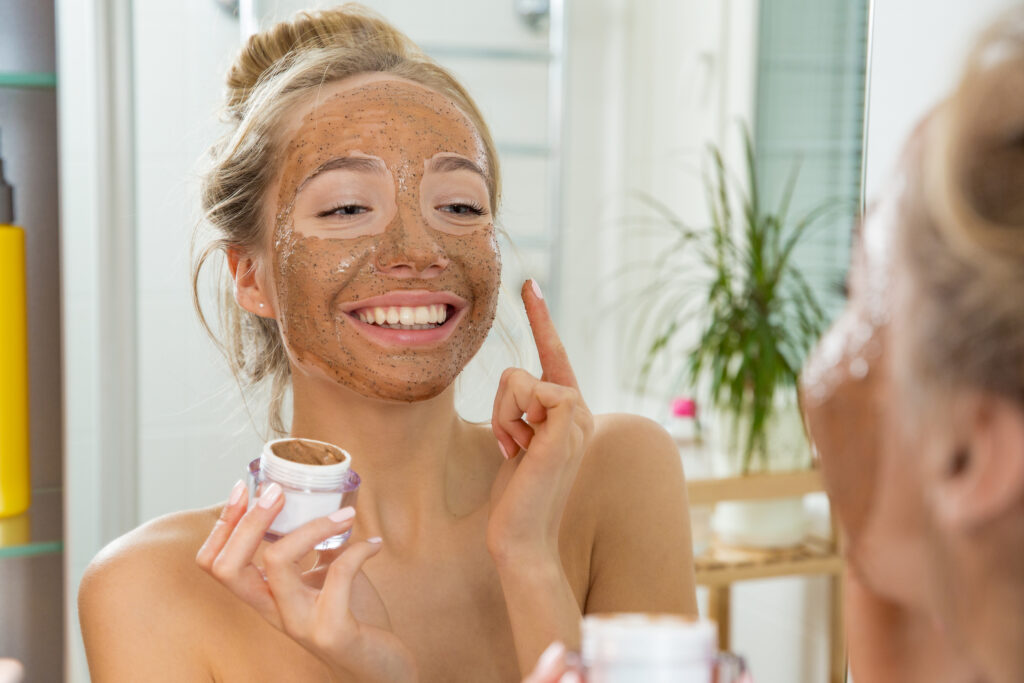
Navigating the world of skincare as a teenager can feel like walking through a maze. Between hormonal changes, school stress, and social pressures, acne often becomes an unwelcome companion during those formative years. I remember my own teen years—waking up with a new pimple almost every morning felt like a rite of passage, but it also made me feel self-conscious and frustrated. If you’re in the same boat, know that you’re not alone, and there are effective, science-backed ways to manage acne-prone skin while embracing your natural beauty.
In this comprehensive guide, we’ll explore everything you need to create a personalized, effective skincare routine tailored for teenagers struggling with acne. From understanding what causes breakouts to selecting the right products, and incorporating lifestyle habits, this post aims to empower you with knowledge, actionable steps, and confidence.
Understanding Acne in Teens: What’s Really Going on?
Before diving into routines and product recommendations, it’s crucial to understand what causes acne, especially during adolescence. Hormonal fluctuations are the primary culprit, triggering increased oil production in the skin’s sebaceous glands. This excess oil, combined with dead skin cells, clogs pores and creates an environment ripe for bacteria like Propionibacterium acnes to flourish, leading to inflammation, pimples, and cystic lesions.
Genetics also plays a role—if your parents had acne, chances are, you might too. External factors such as diet, stress, and environmental pollutants can exacerbate breakouts, but hormonal shifts remain the main driver during adolescence. The good news? With a consistent routine tailored to your skin’s needs, you can manage and even prevent many skin issues.
Building a Teen Skincare Routine: The Foundation for Clear Skin
Creating an effective skincare routine isn’t about complicated steps or expensive products. It’s about understanding your skin’s needs, consistency, and patience. Here’s a step-by-step breakdown, along with expert insights from dermatologists and reputable skincare organizations.
1. Cleansing: The First Step to Fresh, Clear Skin
Why it matters: Cleansing removes excess oil, dirt, and impurities accumulated throughout the day, preventing clogged pores.
What to look for: Gentle, sulfate-free cleansers that match your skin type. For acne-prone skin, look for ingredients like salicylic acid or benzoyl peroxide, which help target breakouts.
How to do it: Wash your face twice daily—morning and night—for about 30 seconds to 1 minute. Use lukewarm water, as hot water can strip natural oils and irritate the skin.
Example: A mild foaming cleanser containing salicylic acid can help exfoliate inside the pores without over-drying your skin, according to dermatology resources.
2. Toning: Balancing Your Skin’s pH
Why it matters: A toner helps remove residual impurities, tighten pores, and prepare the skin for subsequent treatments.
What to choose: Alcohol-free toners with soothing ingredients like witch hazel or niacinamide are ideal for sensitive, acne-prone skin.
Tip: Not everyone needs a toner, so observe how your skin responds. If you notice dryness or irritation, skip it or choose a more gentle formula.
3. Treatment: Targeting Breakouts Effectively
Why it matters: This is where active ingredients do their magic, reducing inflammation and preventing new pimples.
Key ingredients for teens:
- Salicylic Acid: A beta-hydroxy acid (BHA) that penetrates deep into pores to exfoliate and clear out debris.
- Benzoyl Peroxide: Kills acne-causing bacteria and reduces inflammation.
- Adapalene: A topical retinoid that promotes cell turnover and prevents clogged pores.
How to apply: Start with a small amount once daily, and gradually increase frequency to prevent irritation. Always follow product instructions and consult a dermatologist if unsure.
4. Moisturizing: Hydrating Without Clogging
Why it matters: Many teens think that oily skin doesn’t need moisturizer, but skipping hydration can lead to increased oil production and irritation.
Choose: Oil-free, non-comedogenic moisturizers labeled as “matte” or “oil-control.” Look for ingredients such as hyaluronic acid or glycerin.
Tip: Even acne-prone skin needs hydration. The right moisturizer balances oil production and keeps your skin barrier healthy.
5. Sun Protection: Shielding Your Skin
Why it matters: Sun exposure can worsen scars and cause hyperpigmentation, especially on inflamed skin.
Select: Broad-spectrum SPF 30 or higher, non-comedogenic, and oil-free.
Application: Apply generously 15 minutes before outdoor activities, and reapply every two hours.
Additional Tips for Clearer, Healthier Skin
Beyond the core routine, here are lifestyle habits and product tips that can make a big difference:
- Avoid Picking or Squeezing Pimples: It might be tempting, but squeezing can push bacteria deeper and cause scars.
- Keep Hands Off Your Face: Touching your face transfers dirt and bacteria, exacerbating breakouts.
- Wash Pillowcases and Towels Regularly: These surfaces harbor bacteria and oils.
- Watch Your Diet: Some studies suggest that dairy and high-glycemic foods may influence acne, though research varies. Focus on a balanced diet rich in fruits, vegetables, and lean proteins.
- Manage Stress: Stress hormones can trigger oil production. Practice mindfulness, exercise, or hobbies to stay relaxed.
- Stay Hydrated: Drinking plenty of water helps flush out toxins and keeps skin supple.
When to Seek Professional Help
If over-the-counter products aren’t enough after 6–8 weeks, or if you experience severe cystic acne, it’s time to consult a dermatologist. They can prescribe stronger topical or oral medications, recommend professional procedures, and help craft a tailored plan.
Comparing Popular Teen Acne Treatments: A Quick Overview
| Treatment Type | Pros | Cons | Best For |
|---|---|---|---|
| Salicylic Acid Cleanser | Gentle exfoliation, reduces pore clogging | Can be drying if overused | Mild to moderate acne |
| Benzoyl Peroxide Gel | Kills bacteria, fast-acting | Can cause dryness and irritation | Active breakouts |
| Adapalene Gel (Retinoid) | Prevents future breakouts, promotes cell turnover | Photosensitivity, irritation | Persistent or severe acne |
| Oil-Free Moisturizer | Hydrates without clogging pores | May be less nourishing for very dry skin | Daily hydration |
| Sunscreen (SPF 30+) | Protects skin from UV damage | Needs reapplication | All skin types |
Remember: Always patch-test new products and introduce one at a time to gauge your skin’s response.
Frequently Asked Questions (FAQs)
Q1: How long does it take to see results from a teen skincare routine?
A: Typically, you can expect to see improvements within 4 to 8 weeks. Consistency is key, so stick with your routine even if you don’t see immediate changes.
Q2: Can I use multiple acne treatments together?
A: Yes, but be cautious of over-drying or irritation. For example, combining benzoyl peroxide with adapalene is common, but always follow instructions and consult a dermatologist.
Q3: Are natural remedies effective for teen acne?
A: Some natural ingredients like tea tree oil have antimicrobial properties, but they are usually less potent than medical-grade products. Always patch-test and seek professional advice before trying new remedies.
Q4: Is it okay to wear makeup if I have acne?
A: Yes, but choose non-comedogenic, oil-free makeup. Remove it thoroughly at night to prevent clogged pores.
Q5: How important is diet in managing teen acne?
A: While the link isn’t definitive for everyone, maintaining a balanced diet and reducing high-glycemic foods can help some teens improve their skin.
A Final Word: Embrace Your Skin Journey
Remember, clear skin is a journey, not a destination. Your teenage years are a time of growth, self-discovery, and resilience. While acne can feel overwhelming, understanding your skin, maintaining a consistent routine, and seeking support when needed can set you on the path to healthier skin and boosted confidence.
Every skin type and concern is unique—what works for one person might not work for another. Be patient, gentle, and kind to your skin. Celebrate small victories, like a less inflamed breakout or a smoother complexion, and remember that your worth isn’t defined by blemishes.
If you’re ever unsure about your skin or treatments, don’t hesitate to consult a dermatologist—they’re there to help you navigate this journey with personalized advice and care. Your skin is a canvas of your story—treat it with love, patience, and respect.
Next steps: Keep a skincare journal to track what products or habits make a difference, stay informed through reputable sources like the American Academy of Dermatology, and remind yourself that every teen’s skin tells a unique story—embrace yours with confidence!




